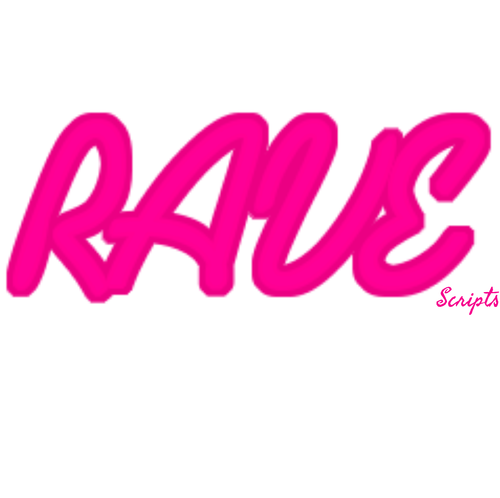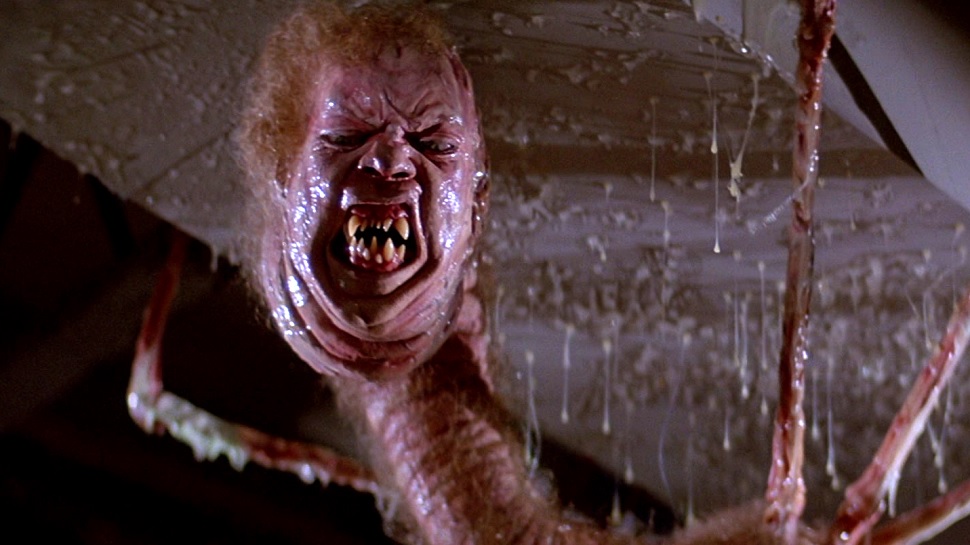Welcome to our screenwriting blog, where we dive deep into the fascinating world of script analysis and exploration. In this post, we embark on an exciting journey to deconstruct one of the most iconic sci-fi scripts of all time: “The Thing.” Released in 1982 and directed by John Carpenter, “The Thing” remains a beloved masterpiece that has captivated audiences with its suspense, horror, and intriguing storytelling. Join us as we unravel the secrets behind this gripping screenplay, examining its narrative structure, character development, and the ingenious ways it builds tension. Whether you’re an aspiring screenwriter, a fan of the film, or simply intrigued by the art of storytelling, this exploration of “The Thing” script is sure to inspire and enlighten. Get ready to uncover the hidden gems and learn valuable lessons from this timeless cinematic gem.
The Genesis of “The Thing” Script: Tracing Its Origins and Inspirations
“The Thing” is a film that has left an indelible mark on the science fiction and horror genres. To understand the script’s origins, we must delve into its fascinating journey of creation. The screenplay for “The Thing” was penned by Bill Lancaster, drawing inspiration from the 1938 science fiction novella “Who Goes There?” by John W. Campbell Jr. Lancaster’s script took the core concept of a shape-shifting extraterrestrial entity wreaking havoc in an isolated Arctic research station and expanded upon it with his own vision.
Lancaster’s adaptation infused the story with additional layers of suspense, paranoia, and psychological intensity. The script became a tale not just about a terrifying alien creature but also a study of human nature under extreme circumstances. It delved into themes of trust, isolation, and the fragility of the human psyche.
John Carpenter, the visionary director behind “The Thing,” was immediately captivated by Lancaster’s screenplay. Carpenter embraced the opportunity to bring this chilling story to life on the silver screen. With Carpenter’s vision and mastery of creating tension and atmosphere, “The Thing” script became the foundation for a cinematic experience that would haunt audiences for decades to come.
The script’s evolution involved multiple drafts and refinements to fine-tune the pacing, character dynamics, and the escalating sense of dread. The collaborative efforts of Lancaster, Carpenter, and the production team honed the script into a cohesive and gripping narrative that would keep viewers on the edge of their seats.
Beyond its literary origins, “The Thing” script also drew inspiration from classic horror and science fiction films. Carpenter paid homage to the works of directors such as Howard Hawks and his 1951 film “The Thing from Another World,” which also adapted Campbell’s novella. By acknowledging these influences while injecting his own unique vision, Carpenter crafted a script that both honored the source material and stood on its own as a modern horror masterpiece.
Crafting Suspense: Analyzing the Narrative Structure of “The Thing” Script
“The Thing” is a masterclass in building suspense and maintaining an unrelenting sense of dread throughout its narrative. The script’s structure plays a pivotal role in intensifying the tension and keeping the audience on the edge of their seats.
From the opening scenes, the script establishes an atmosphere of unease and isolation. It immerses viewers into the isolated Antarctic research station, where a group of scientists becomes trapped with a shape-shifting extraterrestrial entity. The script employs a slow-burn approach, gradually escalating the stakes and unraveling the mystery of the creature’s capabilities.
The narrative structure of “The Thing” is driven by a series of escalating confrontations and discoveries. As the scientists uncover the true nature of the alien and its ability to assimilate and mimic their appearances, the script expertly raises the stakes and tightens the suspense. Each revelation propels the story forward, keeping the audience guessing and intensifying their anticipation of what will happen next.
The script utilizes a non-linear approach at times, strategically revealing glimpses of the creature’s influence and its effect on the characters. This fragmented structure adds an additional layer of suspense, as viewers are left to piece together the events and implications of the unfolding horror.
Another element that enhances the suspense is the script’s skillful pacing. It balances moments of quiet unease with intense sequences of action and terror. The script allows moments of reprieve, building tension through the characters’ interactions and the growing distrust among them. These calmer moments serve as a stark contrast to the explosive and horrifying encounters with the creature, amplifying the impact of those high-stakes moments.
“The Thing” script also embraces the concept of the unknown, leveraging the fear of the unseen. It utilizes ambiguity and uncertainty to create an atmosphere of constant unease. The script strategically withholds information, leaving the audience as much in the dark as the characters. This sense of uncertainty fuels the suspense, making every revelation and encounter with the creature more chilling and unpredictable.
Complex Characters in the Antarctic: Exploring Character Development in “The Thing” Script
- MacReady – The protagonist, MacReady, is a complex character who evolves throughout the script. Initially portrayed as a detached and cynical figure, he gradually reveals layers of resilience, resourcefulness, and leadership as he navigates the escalating horror. His transformation from a lone wolf to a selfless hero adds depth to his character arc.
- Dr. Blair – Driven by scientific curiosity, Dr. Blair undergoes a profound transformation as he unravels the true nature of the alien threat. Initially rational and composed, he descends into paranoia and obsession as he grapples with the immense danger the creature poses. His character development explores the fragile nature of the human psyche under extreme circumstances.
- Childs – Childs is a stoic and enigmatic character, often keeping his thoughts and emotions hidden. His presence adds an element of mystery and mistrust within the group. Through subtle nuances and guarded interactions, the script offers glimpses into his internal struggles and motivations, leaving room for interpretation and speculation.
- Nauls – Nauls serves as the group’s cook and brings a dose of levity and lightheartedness to the story. Despite his initial portrayal as a secondary character, the script delves into his resilience and determination as he confronts the alien threat. Nauls’ character development showcases unexpected strength and showcases the courage that can emerge from unexpected sources.
- Dr. Copper – Dr. Copper, the medical officer, embodies a sense of responsibility and compassion. His character development is revealed through his unwavering commitment to the well-being of the group, even as the situation becomes increasingly dire. Dr. Copper’s steadfastness and dedication to saving lives contribute to the moral complexity and emotional depth of the script.
- Palmer – Palmer is a character who undergoes a drastic transformation, falling victim to the alien’s infiltration. The script explores the tragic consequences of the creature’s assimilation, delving into the horror and chaos that ensues. Palmer’s character development highlights the devastating impact of the alien threat on both individuals and the group as a whole.
Building Tension and Terror: Unveiling the Techniques Behind the Horrific Moments in “The Thing” Script
Here’s a list of techniques used in “The Thing” script:
- The script for “The Thing” masterfully utilizes atmospheric descriptions to set the stage for tension and terror. It creates a sense of foreboding and unease through vivid depictions of the desolate Antarctic landscape, the isolation of the research station, and the harsh environmental conditions. These descriptions immerse the readers and viewers in a world where danger lurks just beyond the characters’ perception.
- The script employs a slow-burn approach to build tension gradually. It introduces subtle hints and glimpses of the alien’s presence, leaving the audience with a sense of unease and anticipation. By withholding full-on confrontations with the creature early on, the script allows the tension to simmer and intensify, creating a heightened sense of dread as the story progresses.
- “The Thing” script strategically times the reveals of the creature’s horrifying transformations and abilities. It unleashes these moments of terror at key junctures, maximizing their impact and shocking the audience. The well-placed reveals serve as climactic moments that punctuate the growing sense of dread, providing shocking payoffs that leave lasting impressions.
- The script delves into the psychological aspects of fear and paranoia. It explores the breakdown of trust and the erosion of the characters’ sense of security as they grapple with the possibility that anyone could be assimilated by the alien. This psychological warfare heightens the tension, fueling suspicions, and driving characters to their breaking points.
- “The Thing” script features several set-pieces that amp up the terror. These meticulously crafted sequences, such as the blood testing scene or the creature’s reveal in the kennel, employ a combination of suspenseful buildup, shocking twists, and visceral imagery. These carefully orchestrated moments keep the audience on the edge of their seats, fully immersed in the terrifying world of the film.
- The script introduces moral dilemmas that contribute to the tension and terror. As the characters grapple with the threat of assimilation, they face difficult choices and ethical challenges. These moral dilemmas add layers of complexity to the story, increasing the stakes and heightening the emotional impact of the terrifying moments.
In “The Thing” script, tension and terror are expertly crafted through atmospheric descriptions, slow-burn suspense, well-timed reveals, psychological warfare, ingenious set-pieces, and moral dilemmas. These techniques work in harmony to immerse the audience in a world of mounting dread, where the characters’ lives hang in the balance. By strategically utilizing these techniques, the script creates an unforgettable cinematic experience that continues to resonate with viewers to this day.
Click here to read the script.
Related:


Leave a Reply